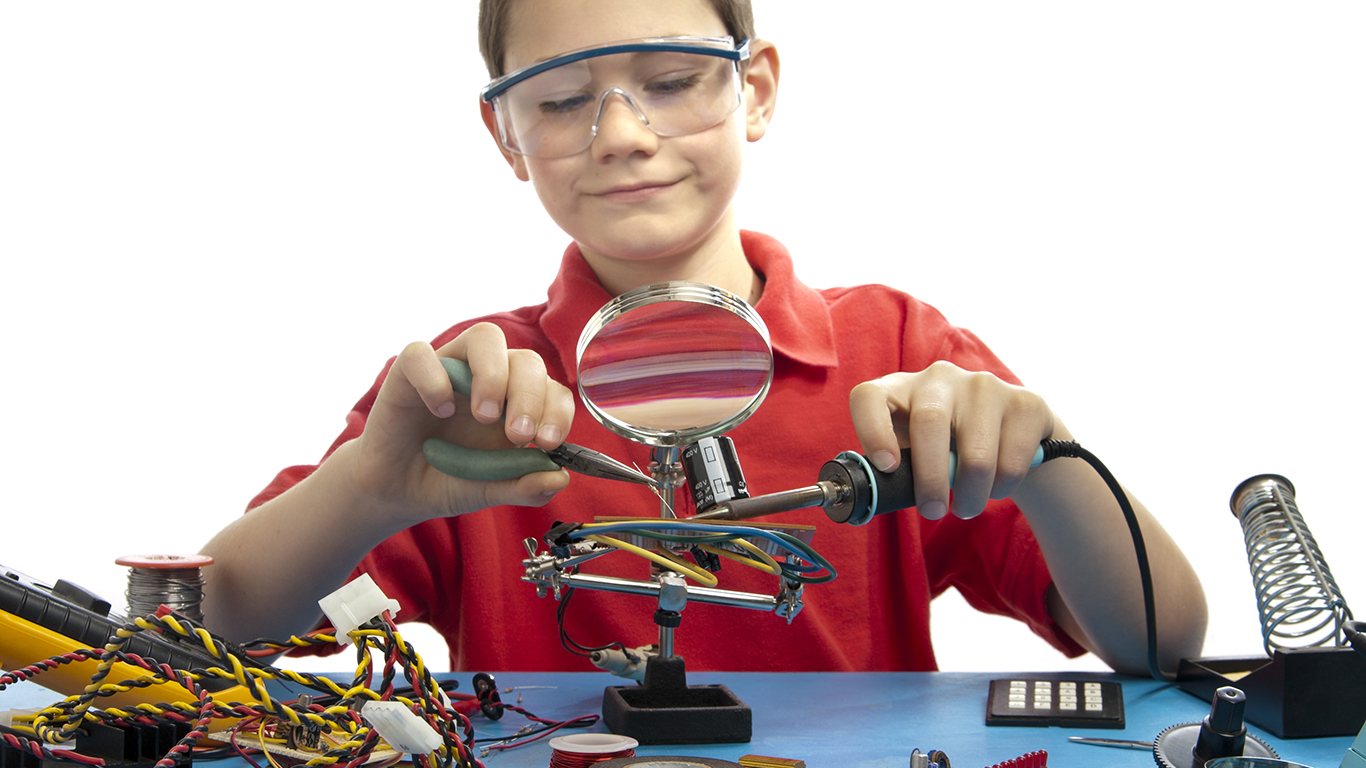
Ever wish you had invented an everyday product that made your life easier or more enjoyable, and also maybe a little rich as well? If you’re looking for some existing inventions for inspiration, don’t be surprised if a particular item was invented by someone who was not old enough to drive, drink alcohol, or vote. In fact, some products that we use every day were dreamed up by those who still believe in Santa Claus.
From earmuffs to an early version of the calculator, to trampolines and popsicles, many products that we take for granted were invented by young people.
So, in recognition of young inventors, 24/7 Tempo salutes those prodigies who have made our lives better.
Click here to read about everyday products invented by kids.
The children who invented these products and others come from all walks of life. Many of these inventions became instant hits among the inventor’s peers, and savvy parents took steps to secure a patent, get distribution deals, and line up production sources. In other cases, these young inventors were forced to rely on their own talents and resources to gain recognition.
Many of the products invented by kids addressed problems they and their parents face each day. Others inventions were created for fun or as a way to pass the time. Like so many products, some of these items came into existence by happenstance. Other products were made by inventors who gained fame later in life. And some creations were developed to address the needs of challenged members of society. Here are 30 NASA inventions we use every day.
George Nissen, age 16, was inspired by trapeze artists. He designed a bouncing rig that we know as a trampoline.
The popsicle was created by accident when 11-year-old Frank Epperson left a soft-drink concoction outside one cold winter night in San Francisco.
Benjamin Franklin, famous for inventing bifocals and the lightning rod, developed hand flippers for swimming when he was a preteen.
Even at such a young age, these inventors were smart enough to recognize a problem and to solve it. For many of them, such as snowmobile inventor Joseph-Armand Bombardier, the early experience of inventing led to a career of innovation.
To compile this list, 24/7 Tempo looked at websites of companies, reference materials, and media sources to create a list of kids who developed everyday products. We considered those products that are recognizable and are used everyday. Not all of these products are sold today, but project to be popular in the future, or have already enjoyed a period of success in the past. Some of these products were precursors to the items that became widespread. All invention dates and inventor ages are estimates.
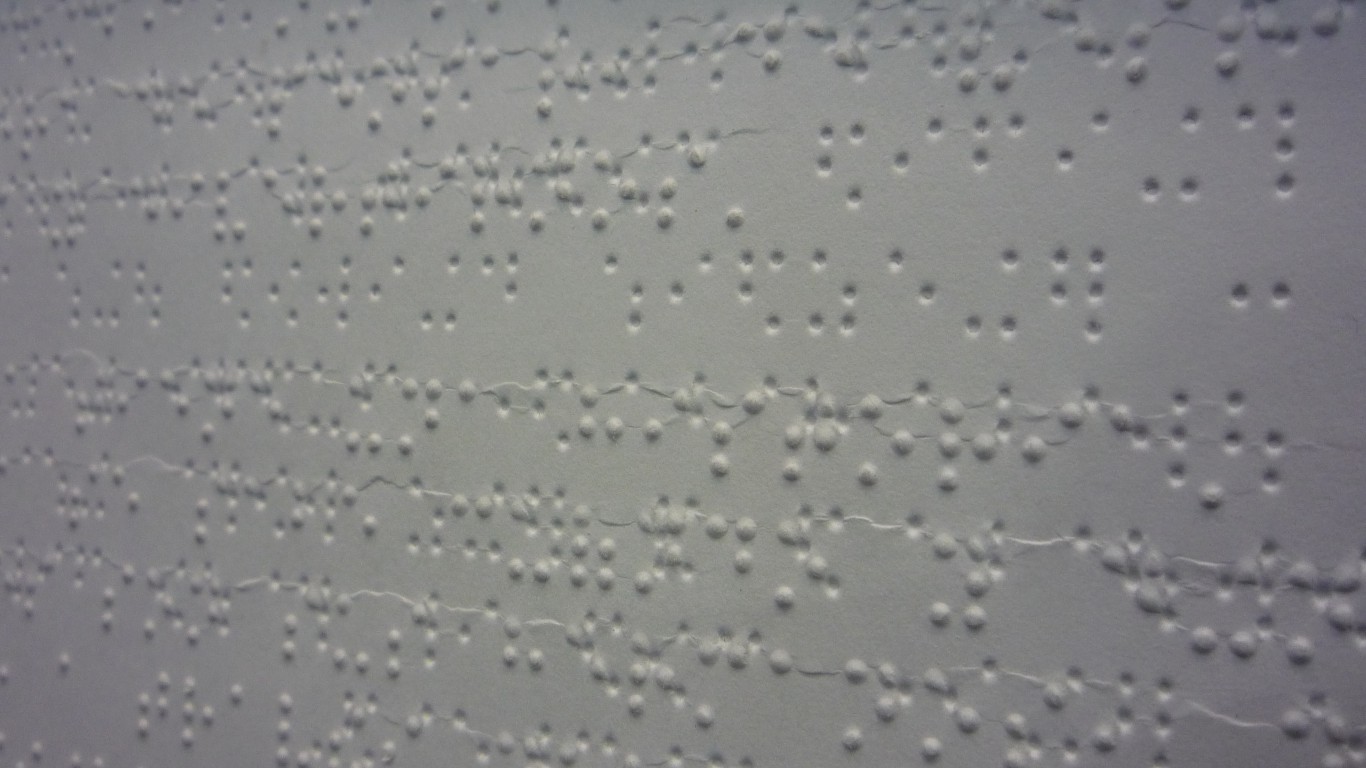
Braille
> Invented by: Louis Braille
> Age when invented: 15
> Invented in: 1824
Braille, the system of elevated dots that allow millions of vision-impaired people to read and write, was invented by Louis Braille in the early 19th century. The French youngster created the system at the age of 15 while he was attending the National Institute for Blind Youth in Paris. The system he invented was derived from a code for sending military messages.
[in-text-ad]

Trampoline
> Invented by: George Nissen
> Age when invented: 16
> Invented in: 1930
Inspired by trapeze artists, George Nissen designed what he originally called the bouncing rig, a canvas sheet that was connected to a rectangular frame with tire inner tubes. The 16-year-old gymnast used his invention to perform a backward somersault. Today, the famous contraption is referred to as the trampoline.
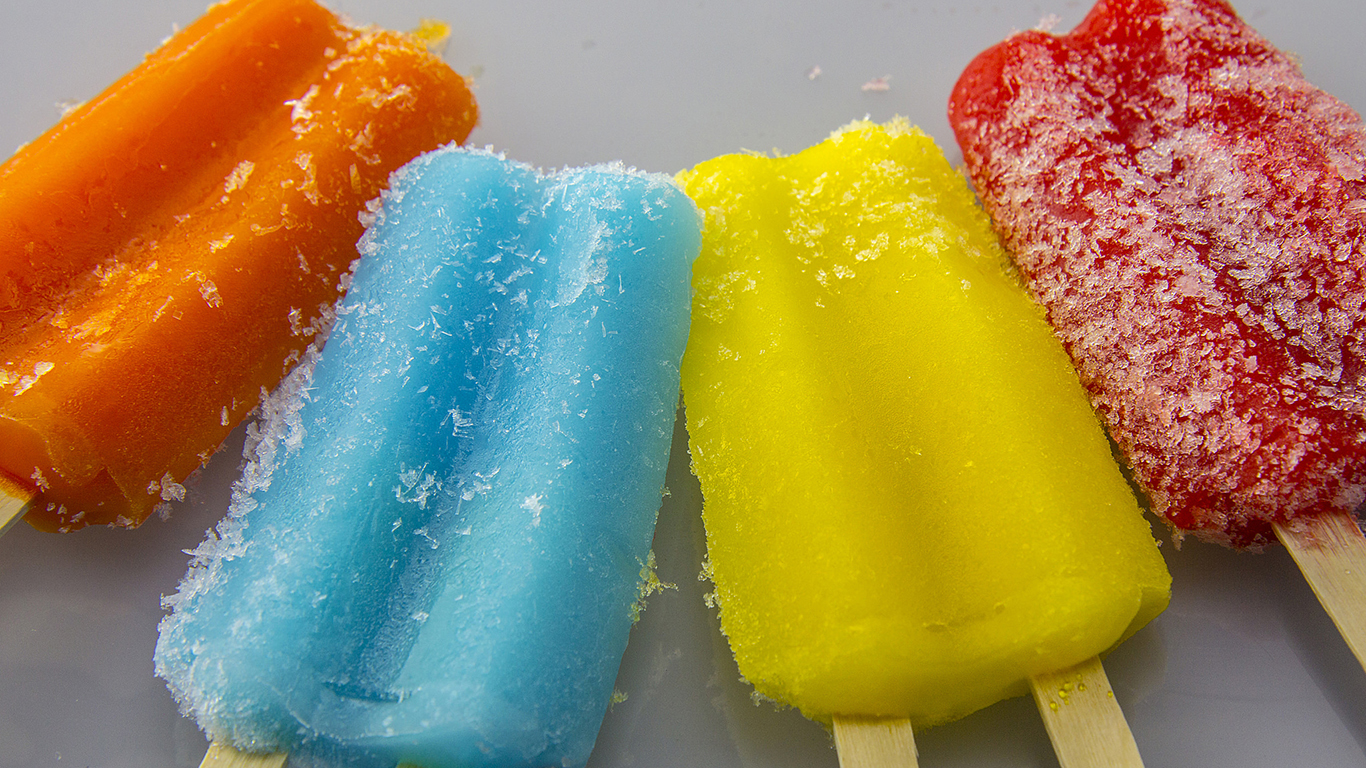
Popsicle
> Invented by: Frank Epperson
> Age when invented: 11
> Invented in: 1905
Many food products have been invented by accident, and the popsicle is one of them. Frank Epperson, 11 years old in 1905, combined a soft drink with soda water powder and water and left the mixture outside one winter night in San Francisco. Epperson showed the frozen concoction to his friends but didn’t do anything with his new product until he applied for a patent in 1923. He later renamed the item “popsicle” and sold the rights to it two years later to the Joe Lowe Company.
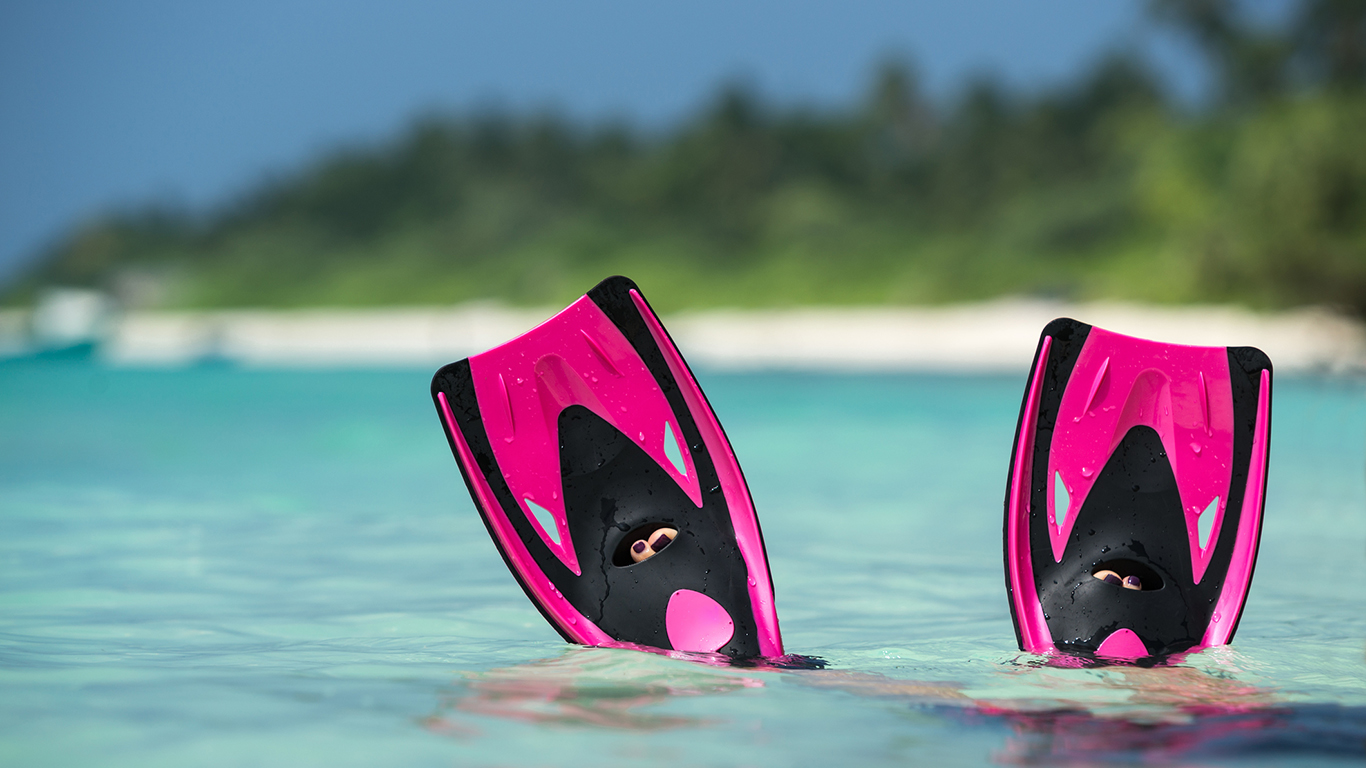
Swim Flippers
> Invented by: Benjamin Franklin
> Age when invented: 11
> Invented in: Early 1700s
No list of product inventions would be complete without including at least one of the innovations of Benjamin Franklin. We know Franklin invented the bifocals and the lightning rod as an adult, but his inventive streak started much earlier. Around 1717, at the age of 11, Franklin developed swim flippers that were worn on the hands rather than the feet. Franklin was a vigorous advocate of swimming and was recognized for his contributions to this healthful endeavor by being inducted into the International Swimming Hall of Fame. Versions of the swim fins are still used to this day.
[in-text-ad-2]

Earmuffs
> Invented by: Chester Greenwood
> Age when invented: 15
> Invented in: 1873
Like many teenagers who live in Maine, Chester Greenwood loved to go ice skating. However, he was allergic to wool hats — the only real option in ear protection at the time. So Greenwood asked his grandmother to sew beaver fur or flannel on a wire headband that had hoops at either end. Whether or not these were the first earmuffs or merely an improvement on the existing invention remains a matter of debate. Either way, the popularity of the item took off and Greenwood went on to build a factory to produce earmuffs. Greenwood didn’t stop inventing, eventually accumulating more than 100 patents.
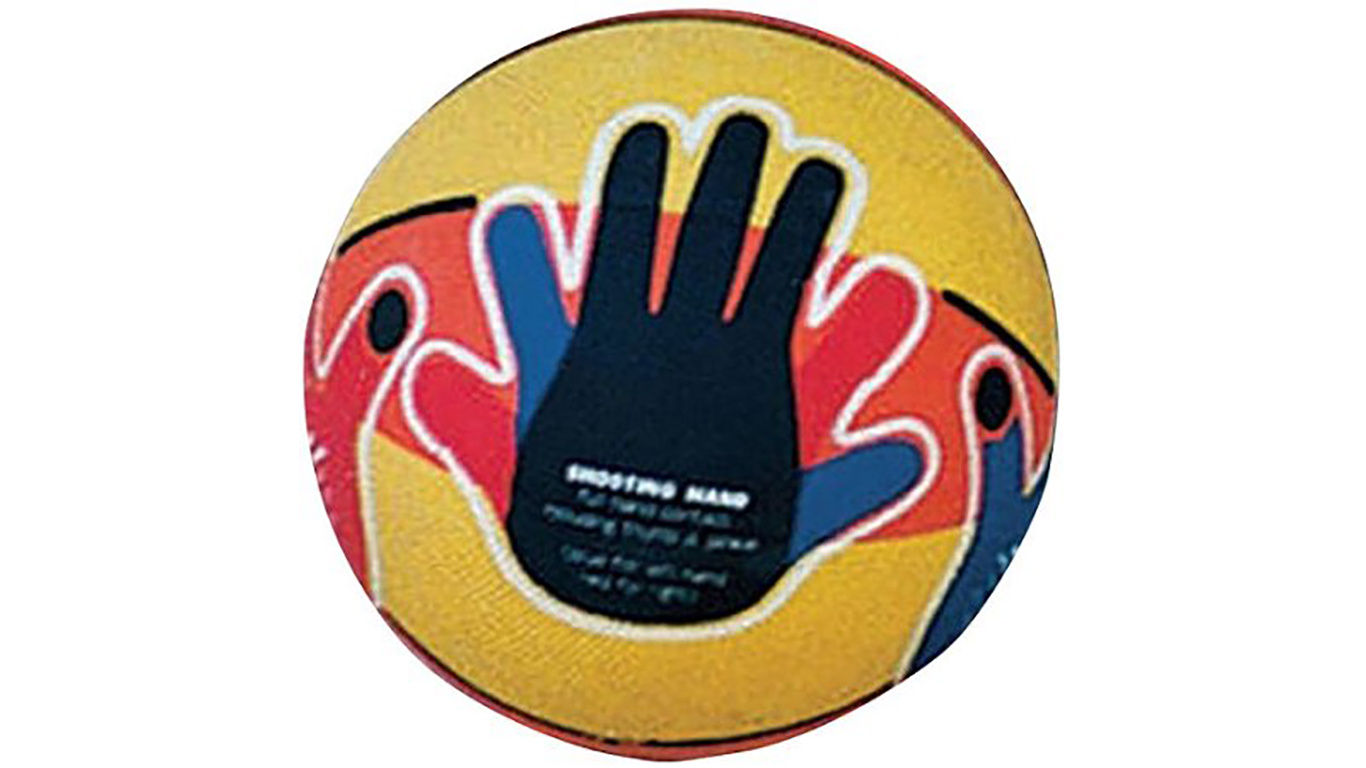
Hands-On Basketball
> Invented by: Chris Hass
> Age when invented: 9
> Invented in: 1994
Chris Hass was only 9 years old when he developed a basketball that would make it easier for for kids to make a shot. The product puts quite a spin on the standard basketball, with a colorful striped base stamped with two hand prints indicating the correct places to hold the ball. Hass brought his creation to life for an Invention Convention competition held at his school, and although he didn’t win, he earned an even greater reward — selling hundreds of thousands of basketballs worldwide.

Snowmobile
> Invented by: Joseph-Armand Bombardier
> Age when invented: 15
> Invented in: 1922
Joseph-Armand Bombardier was mechanically-inclined and liked to rebuild clocks and trains. When his father brought him a damaged Ford Model-T engine, Bombardier fixed it, mounted it on skis, and put an airplane propeller in the back. The new vehicle was used to traverse the impassable roads during winter in Bombardier’s Quebec village. Bombardier would become famous in Canada for his innovations that would lead to the creation of the transportation company Bombardier.
[in-text-ad]

Transformable Toy Trucks
> Invented by: Robert Patch
> Age when invented: 5
> Invented in: 1962
Robert Patch, the ingenious 5-year-old who made one of the world’s most iconic children’s toys, didn’t even know how to spell before he patented his first invention. Patch made a toy truck design using only shoe boxes, bottle caps, and nails that could alternate between a dump truck, a flatbed, and a box truck. With the help of his father, who was a patent attorney, Patch received a patent on his toy truck by the age of six, the youngest person to do so in history.
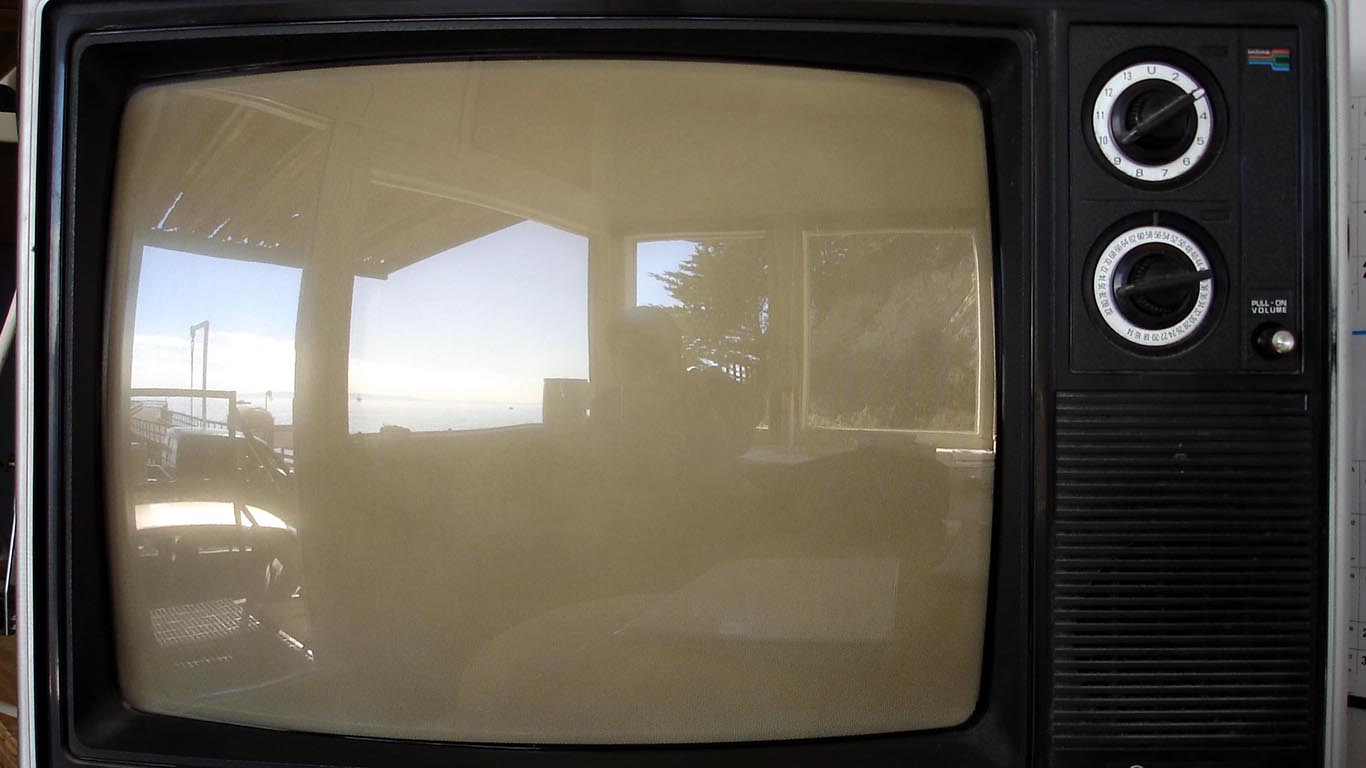
Electric Television
> Invented by: Philo Farnsworth
> Age when invented: 15
> Invented in: 1921
Philo Farnsworth, born in a log cabin built by his grandfather in Utah, converted his family’s appliances to electric power while he was a high school student. During his high school years, he designed an idea for a vacuum tube during chemistry class that would be crucial to the development of what would become the television. He unveiled an all-electronic television prototype in 1927 that featured a video camera tube. Farnsworth worked on other technologies later in life, including radar and nuclear fusion.
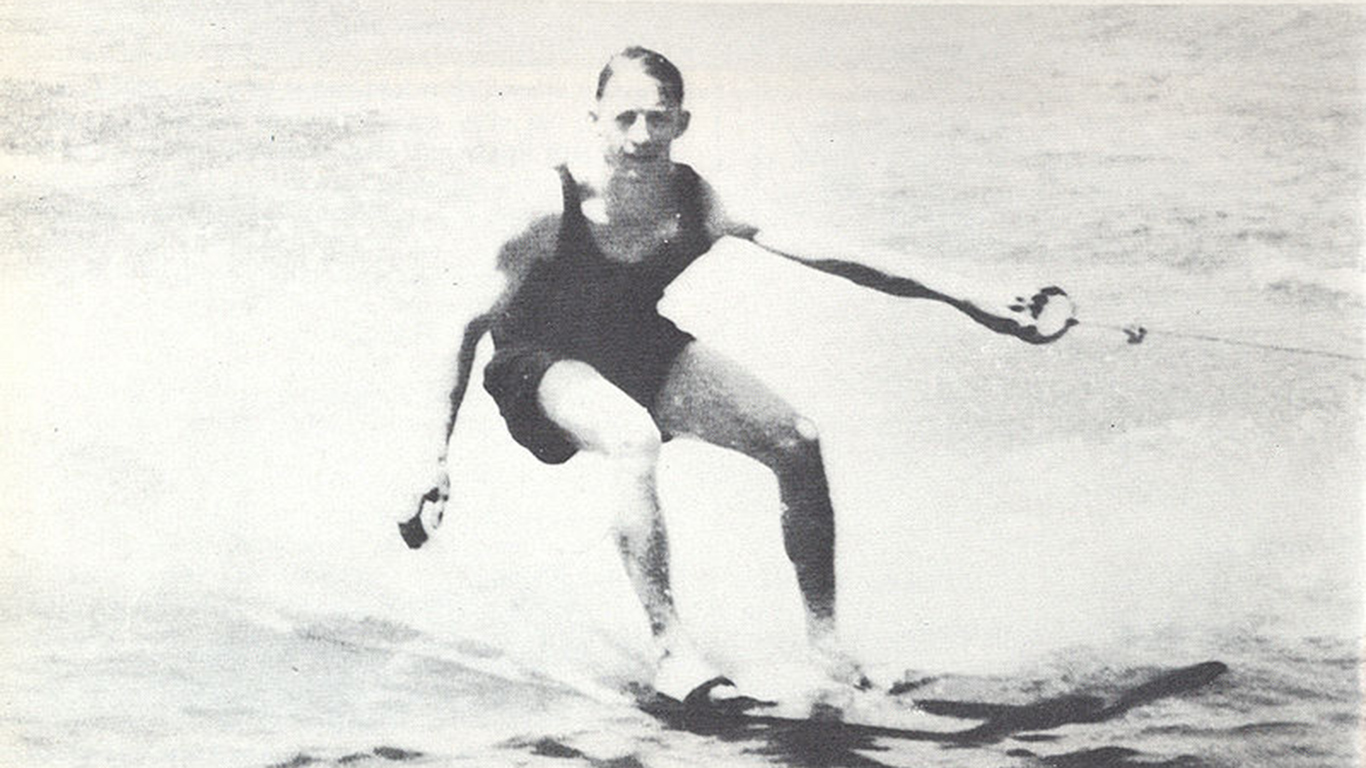
Water Skis
> Invented by: Ralph Samuelson
> Age when invented: 18
> Invented in: 1922
Inventing a product is beyond admirable, but inventing a product and sport at the same time deserves its own accolade. Ralph Samuelson discovered one of the most popular water sports in history, water skiing. Raised in Lake City, Minnesota, Samuelson goes down in history as the first person to successfully ski on the water behind a boat with two skis, and a rope.
[in-text-ad-2]
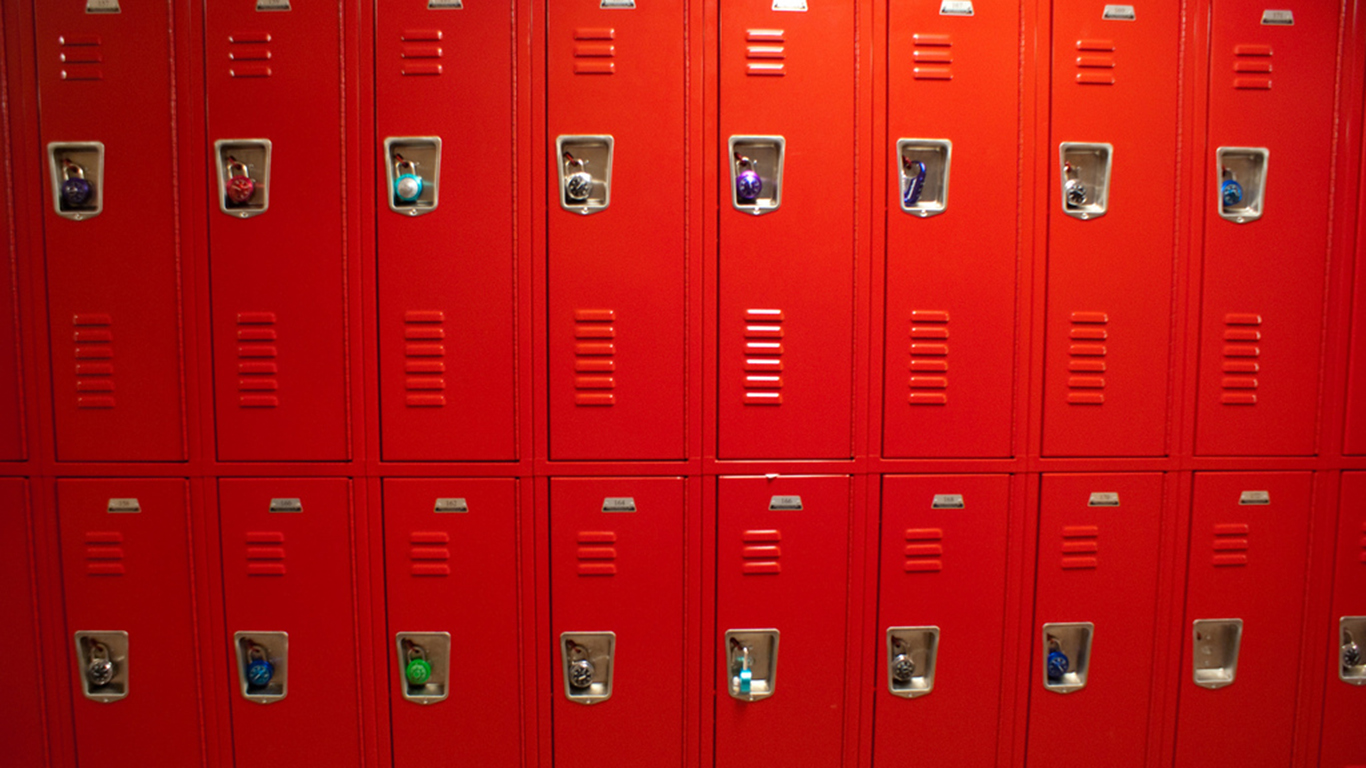
Magnetic Locker Wallpaper
> Invented by: Sarah Buckel
> Age when invented: 14
> Invented in: 2006
Middle school is often pegged as a rough time, but not for Sarah Buckel, who ended up inventing her own product after she finished the eighth grade. Like many girls her age, Buckel looked forward to decorating her school locker but didn’t want to have to deal with the tedious cleanup process at the end of the year. With the help of her father, Buckel was able to create a magnetic wallpaper for lockers. After one year on the shelves at big-name store chains like Target, RIte Aid, and Staples, the young entrepreneur accumulated $1 million in sales.

Calculator
> Invented by: Blaise Pascal
> Age when invented: 18
> Invented in: 1642
Blaise Pascal was a noted French mathematician, physicist, and theologian, and he also is credited with inventing what is considered an early calculator. Pascal created the device to help his father, who was a tax collector, figure out taxes more easily. His invention was called the Pascaline, which operated with a numerical wheel calculator that featured movable dials, with each dial representing a digit. Pascal continued to make improvements on the device and made dozens of versions of the machine.
[in-text-ad]

Bottle-Cap Jewelry
> Invented by: Maddie Bradshaw
> Age when invented: 10
> Invented in: 2006
Maddie Bradshaw was just 10 years old when she created Snap Caps, a stylish, magnetic bottle cap necklace. Her jewelry business, M3 Girl Designs, pumps out an estimated 50,000 necklaces per month and has acquired over $5 million in sales since it started. You may recognize Bradshaw from season three of ABC’s Shark Tank in 2012.
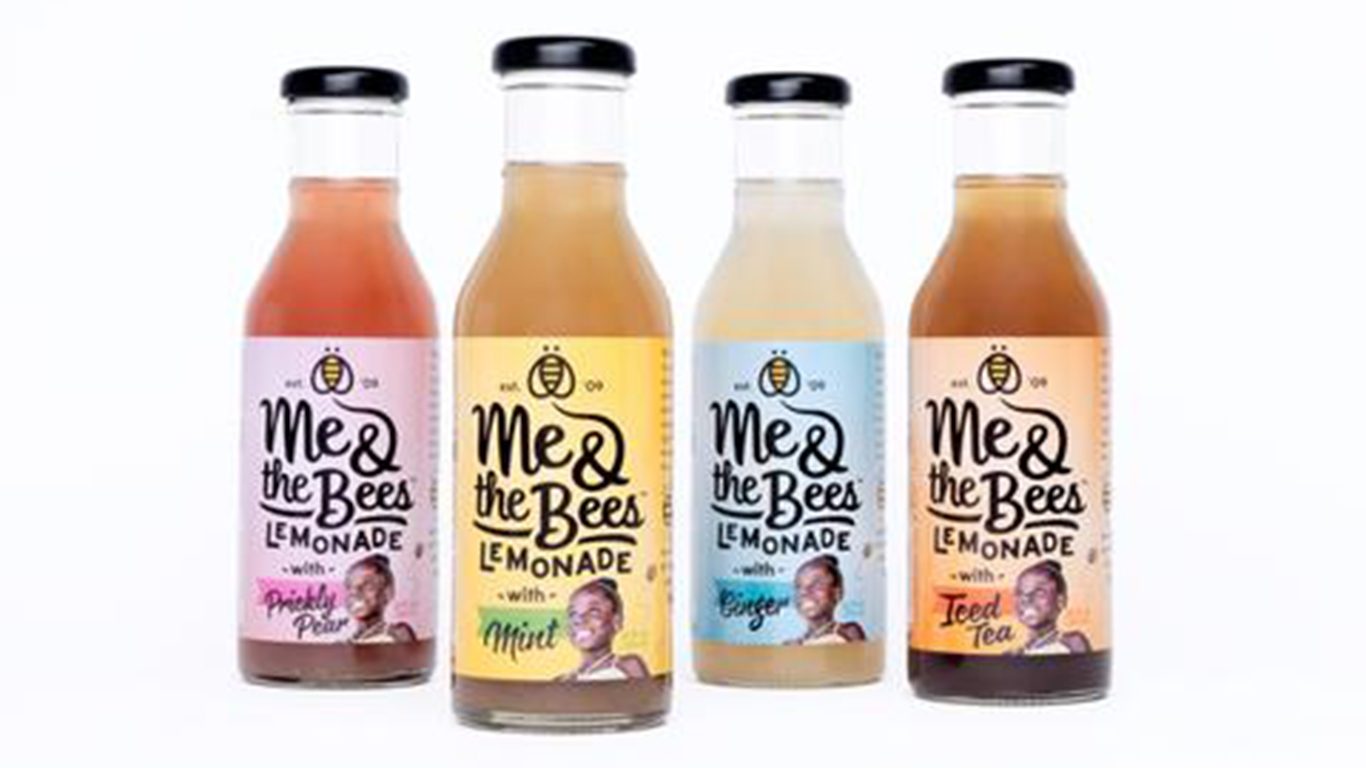
Me & the Bees Lemonade
> Invented by: Mikaila Ulmer
> Age when invented: 11
> Invented in: 2016
At the age of 11, Mikaila Ulmer is among one of the youngest entrepreneurs in the world. Lemonade stands must seem like child’s play to Ulmer who offers a more sophisticated, health-conscious lemonade. The refreshing beverage is sweetened with flaxseed and local honey and can be purchased at places like Whole Foods and Wegmans. Ulmer’s ambitions stem far beyond producing a killer product, though. In an interview with Fortune, Ulmer hopes that by the time she turns 31 she will have saved the bees and found a new problem to solve.
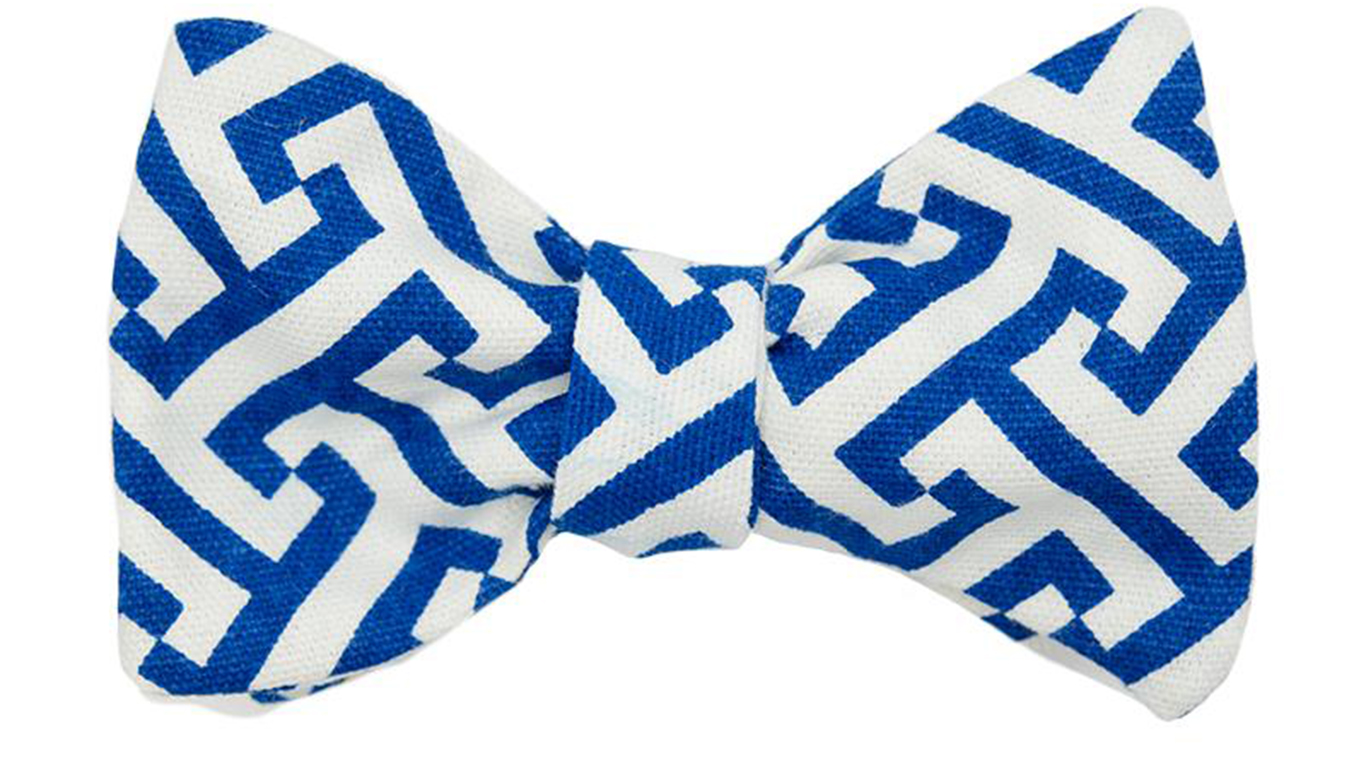
Mo’s Bows
> Invented by: Moziah Bridges
> Age when invented: 14
> Invented in: 2016
He may have a better sense of fashion than most millennials. Moziah Bridges runs his own business called Mo’s Bows, where he designs and sells vibrant bows of all different colors and patterns, as well as other men’s accessories like pocket squares and neckties. Bridges’ products are for sale on his website and in several retail stores in the country. He even holds partnerships with Bloomingdale’s and Neiman Marcus.
[in-text-ad-2]
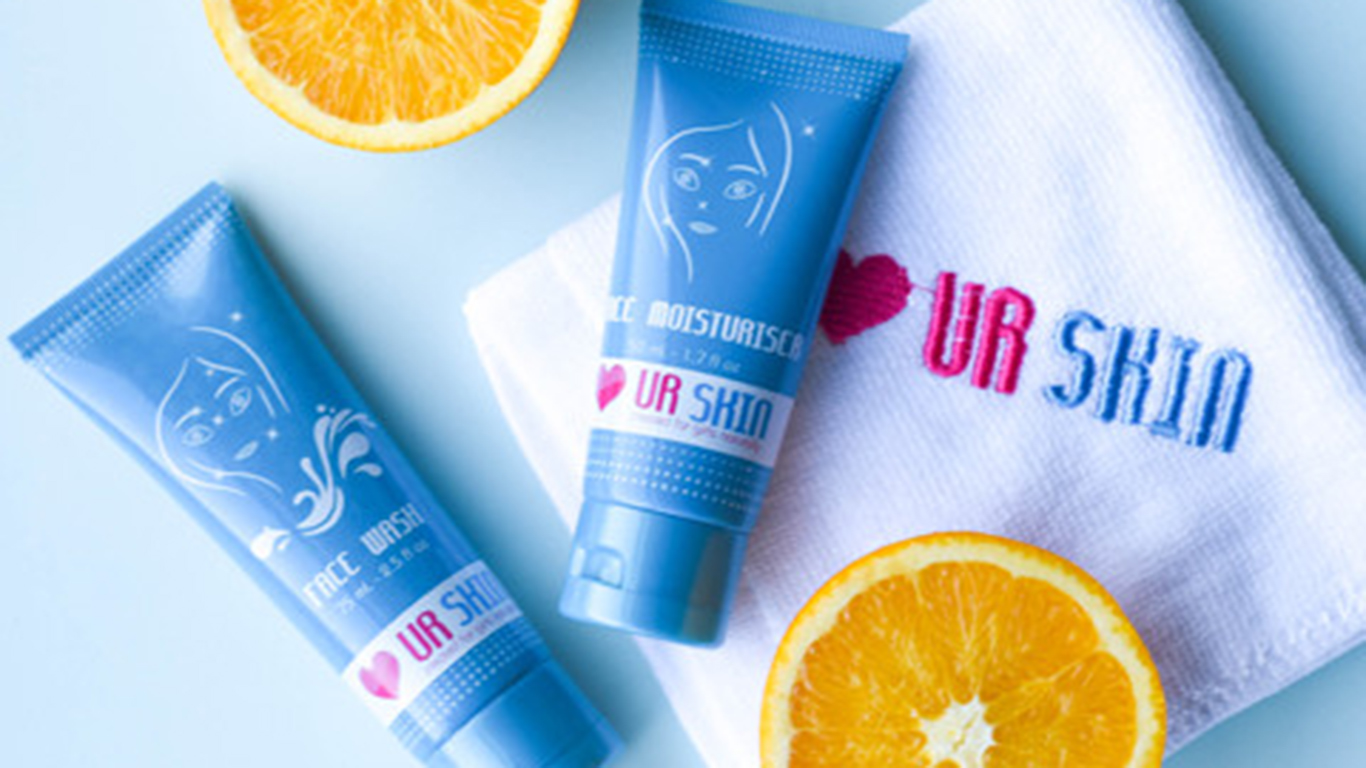
Luv Ur Skin
> Invented by: Isabella Dymalovski
> Age when invented: 14
> Invented in: 2016
Isabella Dymalovski is the founder of Luv Ur Skin, a natural skin-care line. All of Dymalovski’s products are made by experts in Australia who use all-natural, plant-based ingredients. Dymalovski’s products go well beyond keeping skin clear and vibrant — her mission is to help young girls learn how to take care of themselves and remain confident as they undergo puberty.

Makin’ Bacon
> Invented by: Abby Fleck
> Age when invented: 8
> Invented in: 1991
Anyone who’s cooked bacon knows one of the biggest problems is sopping up the grease. Abby Fleck and her dad figured it out. They hung strips of bacon on wooden dowels while cooking bacon in a microwave to let the grease drip on to a plate. After taking their idea to several retailers, the Fleck family struck a distribution agreement with Walmart and they became multimillionaires.
[in-text-ad]
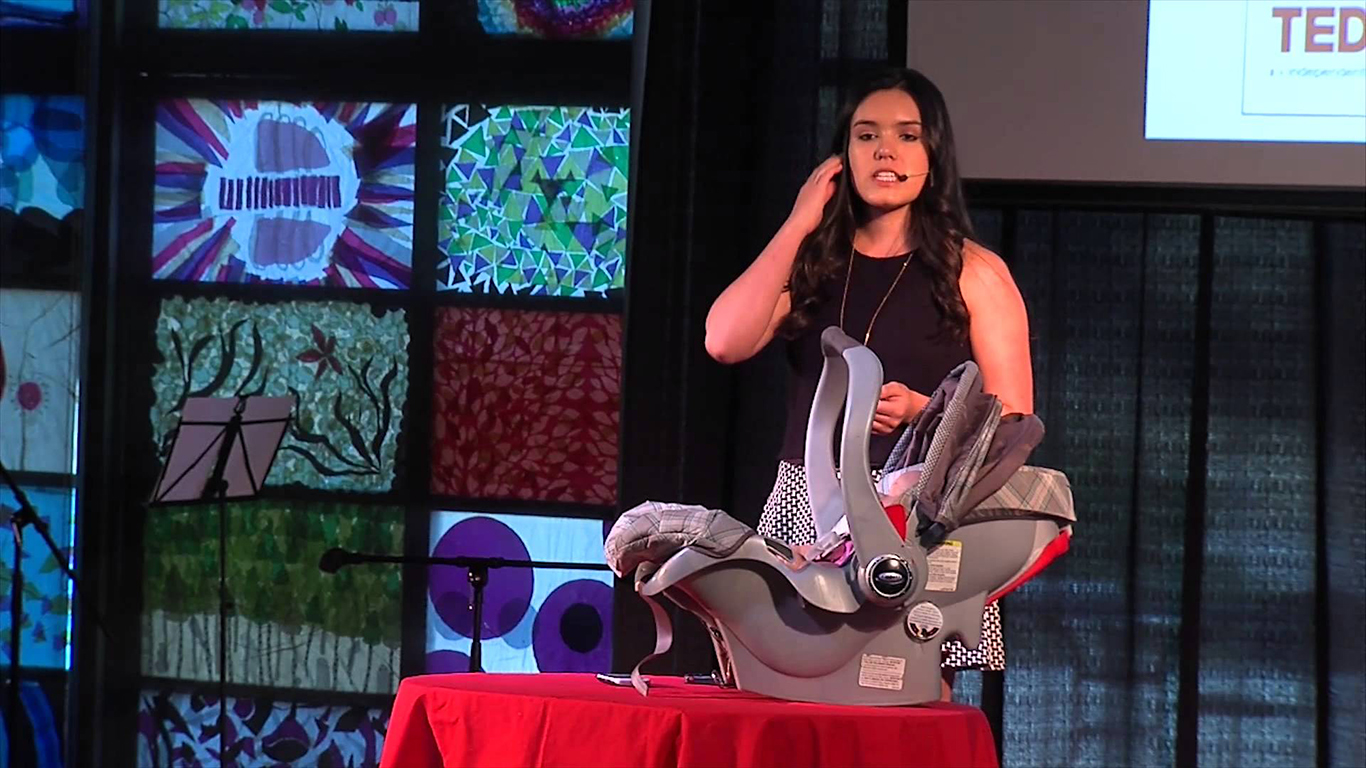
Hot Seat
> Invented by: Alissa Chavez
> Age when invented: 14
> Invented in: 2010
As a teenager from New Mexico, Alissa Chavez invented a device that alerts people if a small child is left alone in car. An alarm goes off on a fob, smartphone, or the car itself if the responsible adult walks more than 30 feet away from the child. Chavez said she was inspired to create the device because her mother operates a home daycare facility and was concerned about children dying in overheated cars.

Kiddie Stool
> Invented by: Jeannie Low
> Age when invented: 11
> Invented in: 1992
Space is a big issue in kindergarten classrooms, and Jeannie Low found a way to maximize it. Low, who is from Houston, devised a folding stool that slides underneath a desk and is attached to a vanity with magnets, keeping the classroom organized. Low’s invention won first prize at Houston’s invention fair. Her invention received a patent in 1992.
[in-text-ad-2]

iAid
> Invented by: Alex Deans
> Age when invented: 15
> Invented in: 2012
Alex Deans, a youngster from Canada, was helping a visually impaired woman cross a street when he was 12. He asked her if there was any technology that could help blind people, and he was told there was not. That conversation stayed in his mind, and inspired him to invent iAid, a device that assists visually impaired people to move around with greater ease. The device acts like a sonar and uses sensors affixed to a belt that map out the area around a person.
100 Million Americans Are Missing This Crucial Retirement Tool
The thought of burdening your family with a financial disaster is most Americans’ nightmare. However, recent studies show that over 100 million Americans still don’t have proper life insurance in the event they pass away.
Life insurance can bring peace of mind – ensuring your loved ones are safeguarded against unforeseen expenses and debts. With premiums often lower than expected and a variety of plans tailored to different life stages and health conditions, securing a policy is more accessible than ever.
A quick, no-obligation quote can provide valuable insight into what’s available and what might best suit your family’s needs. Life insurance is a simple step you can take today to help secure peace of mind for your loved ones tomorrow.
Click here to learn how to get a quote in just a few minutes.
Thank you for reading! Have some feedback for us?
Contact the 24/7 Wall St. editorial team.
 24/7 Wall St.
24/7 Wall St.